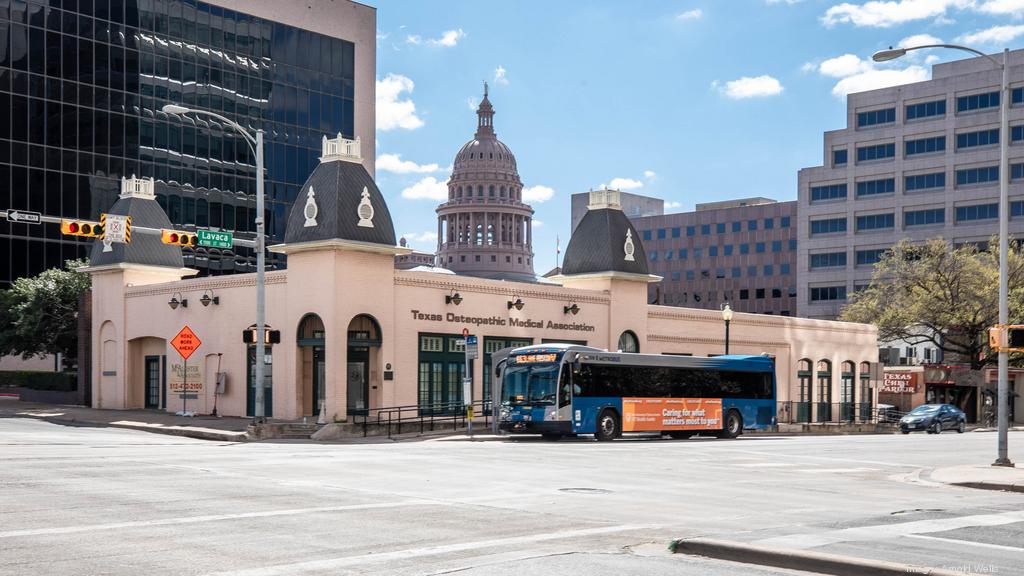|
TOMA Building Sale Marks End of an EraBy Steve Durham, Executive Director, TOMA The Texas Osteopathic Medical Association closed the sale of its building at 1415 Lavaca on April 20, 2021. President Brandon Lewis, DO, MBA, signed the paperwork. The building sale process started in early 2018 with two failed contracts preceding this purchase by the State Bar of Texas. This was an end to an outstanding era in TOMA history. TOMA was founded in 1900 and eventually began operating out of offices on Bailey Avenue in Fort Worth, Texas. To this day, Dallas-Fort Worth still has the largest concentration of TOMA members. But in 1990, TOMA leaders began traveling to Austin more frequently and ultimately chose Austin to become the association’s headquarters. In 1992, the TOMA House of Delegates passed Resolution No. 1992-10, which involved a somewhat contentious battle over moving TOMA from Fort Worth to Austin. In 1994, the TOMA House of Delegates passed Resolution No. 1994-11, which reaffirmed its decision to locate the TOMA headquarters “as close as feasible” to the Texas Capitol in Austin. That’s where the story begins. Although some members wanted TOMA to stay close to the Texas College of Osteopathic Medicine (now UNT Health Science Center TCOM), others considered the proposed Austin headquarters as a prudent, longer-term vision for the organization. At that time, T. Eugene Zachary, DO, who served TOMA as speaker for 17 years and as president during 1994–1995 was a key figure in the process. He assigned Royce Keilers, DO, the duty to find TOMA’s next home. In the spring of 1995, Dr. Keilers found the building at 1415 Lavaca Street. It was a building in need of repair — a lot of repairs in fact — but also a building with the ideal location. Mark Baker, DO, said later, “When we found that building, it was literally in shambles, but the location was just too good to pass up. We really had to have an eye to the future to envision what it could become.” The original house-like structure was built in 1882 by Eugene C. Bartholomew, a Republican politician during an era of Democrats. Bartholomew sold the property in 1885 for $4,000. The City of Austin still refers to it as the “Bartholomew” building. It changed hands several times until 1923, when R.W. Shipp, MD, bought it for $16,000. Dr. Shipp was a physician with a medical degree from Tulane University. He used and modified the building for decades. Dr. Shipp died in 1955, and his wife passed in 1961 before their estate eventually sold the building. By 1963, the Bartholomew building became Pfenning’s Draperies, then Capital Oyster Bar in 1969. It was bought by John P. Watson in 1977 and became Castle Creek Folk Club, hosting acts such as Muddy Waters, Willie Nelson, and John Prine. In 1984, it became The Comedy Workshop, where young comedians like Jerry Seinfeld, Jay Leno, and Ellen DeGeneres performed. In 1989, J. Tim Brown bought the building and then sold it to TOMA in 1995. TOMA moved in during September and began to renovate immediately. Construction managers and architects were hired, and some were fired. Fundraising occurred, and more money was needed. The original estimate for renovation was $200,000, but it took much more than that. Gracious TOMA leaders, members, and spouses dedicated their time and money throughout the project. The Texas chapter of the American College of Osteopathic Family Physicians joined forces with TOMA to assist; their help was needed and appreciated. In August 1997, TOMA DOs attended the “Turret Topping” party at the Doubletree balcony. There they witnessed the fresh placement of new turrets sitting atop their new building. On Sept. 27, 1997, there was a formal grand opening ribbon-cutting ceremony. This acquisition became a project that united people through activities of self-sacrifice and faith. TOMA presidents, board members, and membersalike kept the momentum alive with fundraising drives to pay off the indebtedness. The project was finished in 1998. The bank loans were completed about a decade later. As time moved forward, some 10-plus years later, the building began to suffer again. It required more repairs and deeper pockets. Keeping the historical aspects up to code was difficult and expensive. Fundraising was harder to come by, Austin property taxes were rising, and maintenance expenses were a growing burden. The world was changing as well. The digital age had ushered in a busier time for all, especially physicians. There was less time for business socializing, and the building’s proximity to the Texas Capitol didn’t have the same impact it once did. Office space was less needed, and in-person meetings were less common. Even phone calls were becoming replaced with more time-efficient emails and text messages. The world, the profession, and life itself were rapidly changing. Through the fullness of time, the osteopathic profession had meanwhile established itself more than ever. There were two new medical schools validating advancement across the board. This was progress, carried on the shoulders of those who came before them. So many battles had been fought and won. And yet, somehow, this small TOMA building with 4,000-plus square feet, surrounded by giant high-rise buildings, provided the perfect symbol. It was older now, and it needed help, but it had done its job by advancing the osteopathic profession forward. That era, the people who shaped it, and the people who responded to the challenge — they made it happen. We all owe them a huge debt of gratitude. We appreciate them for their vision, sacrifice, and dedication. The next generation should remember their legacy as a guidepost — how their dedication and commitment manifested itself through a building. It was a beautiful thing, and the people who made it happen will never be forgotten. |


